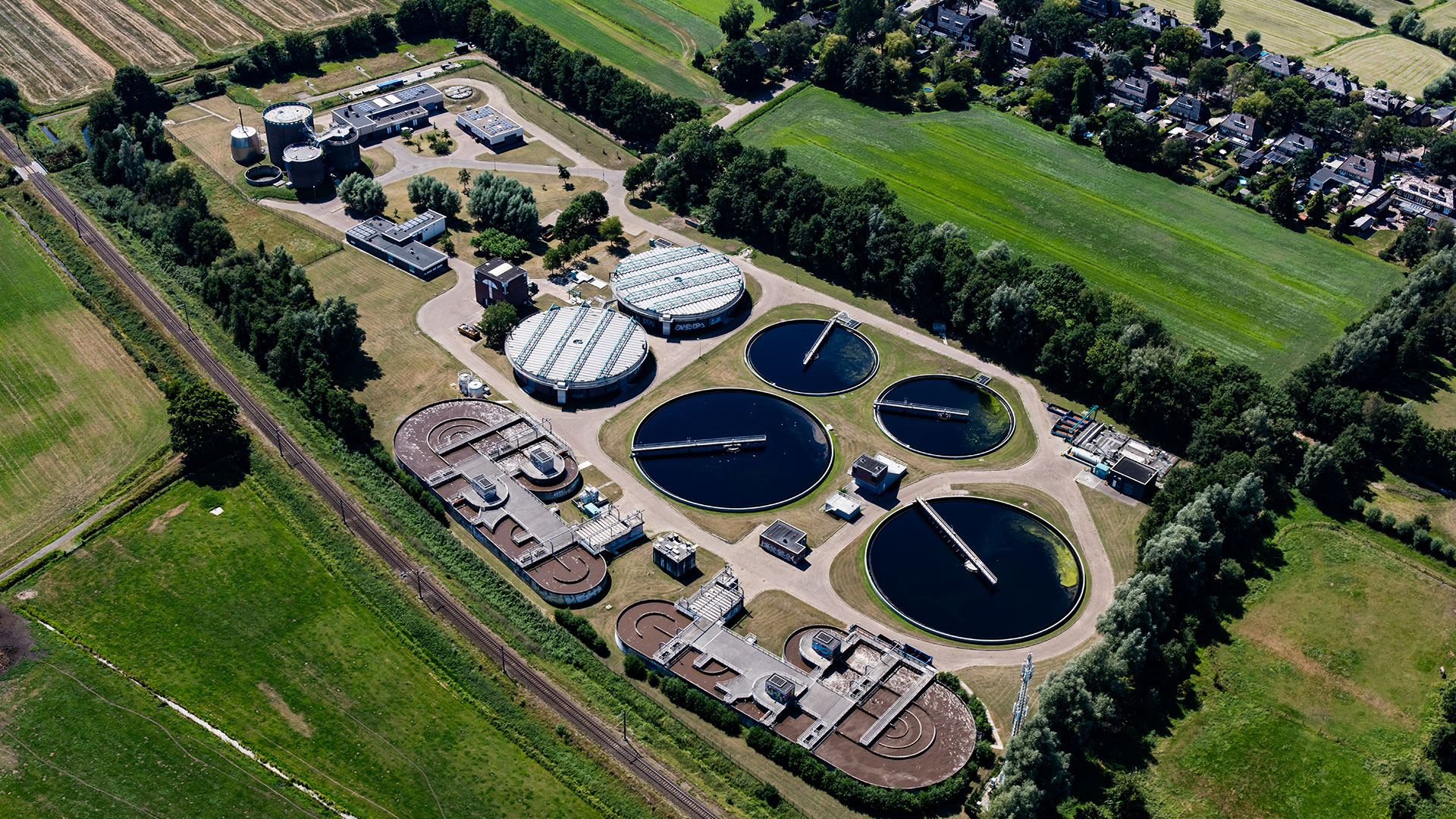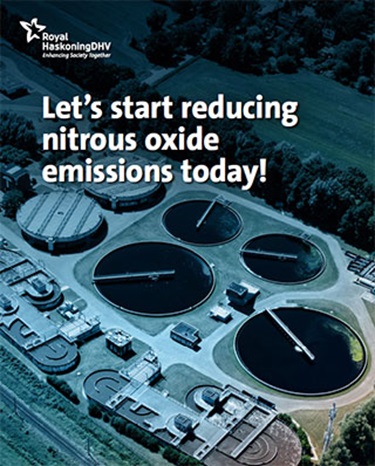Reducing N2O emissions at wastewater treatment plants

Advanced Process Control for quick impact on nitrous oxide
For the last 25 years, Royal HaskoningDHV has utilised its Aqua Suite software equipped with Advanced Process Control (APC) modules to better understand and control the processes of drinking water and wastewater treatment work. Royal HaskoningDHV has also been involved in researching the degree of nitrous oxide emissions from wastewater treatment plants (WwTP) in the Netherlands. The results of these studies provide water authorities with tools to determine the emission of N2O. This knowledge is shared in a Community of Practice (CoP) Nitrous oxide in which almost all water authorities are now participating.
Although there has been a shift towards automated process control, most wastewater treatment plants focus on adjusting their processes based on deviations that are registered by online process measurements. However, with the help of modern AI in combination with domain knowledge, the process behaviour can often be predicted in advance.
Predictive control enables efficient processes based on what will happen rather than what has happened. This allows for control in an anticipatory rather than a reactive way: If you know what to expect is going to happen, you can adapt to achieve the optimal state. Aqua Suite is equipped with Advanced Process Control modules that make this possible. Aqua Suite is operational for twelve WwTWs in the Netherlands, Israel, and Singapore with activated sludge systems and is currently being implemented for another three WwTWs in the Netherlands and Northern Ireland.
This domain knowledge combined with the N2O research over the last few years has illustrated that a good control strategy can pay off in reducing emissions. Advanced Process Control can provide such a strategy using a holistic approach incorporating both artificial intelligence and domain knowledge.
Preliminary results at WwTW Soest show ⅓ reduction in nitrous oxide emissions
In cooperation with Water Authority Vallei and Veluwe, Royal HaskoningDHV began piloting Aqua Suite Pure at their WwTW in Soest, the Netherlands in November 2020.
The pilot started by measuring two identical treatment trains. This involved installing sensors for each train that measured N2O concentration in real-time. At the same time, research was conducted to compare the difference between using the Aqua Suite Advanced Process Control application with the local PLC-SCADA control. The information gathered from the sensors showed that during periods in which influent pollution was higher (high loaded period), N2O concentrations could be reduced by ≈⅓ in the train controlled with advanced process control.
With these preliminary results, research will continue not only in Soest but also at several other plants in the Netherlands. Future research will look to better account for times of both high and low loaded periods of pollution, as well as optimising the advanced process control.
Royal HaskoningDHV brings together more than 25 years of data science capabilities and software development. Combining that work with almost 140 years of engineering consultancy knowledge means we are well equipped to support clients with reducing nitrous oxide emissions and optimising their approach to wastewater treatment work.
Let’s start reducing nitrous oxide emissions today!

Got a question?
Contact our Water Technology experts!